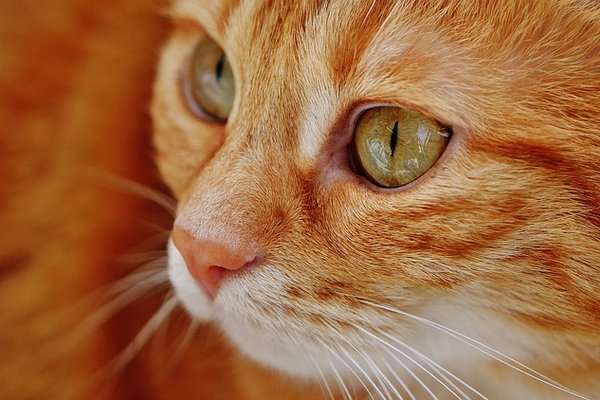We all want the best for our cats, don’t we? To keep them safe, comfortable and happy; and to protect them from disease or illness. Sadly, we have to accept that all our cats, wherever and however they live, are at least potentially at risk from parasites - in particular, worms. However, the good news is that there’s a lot we can do to control these unwanted guests, and by understanding them, we can keep cats healthy and worm-free!
How do cats get worms?
Cats pick up worms by eating their eggs - doubtless accidentally, as no self-respecting feline is deliberately going to consume them! However, over the years, various types of worm have found remarkably clever ways to conceal their offspring from attracting the notice of even the most discerning cat.
One common route is through shared litter areas (sandpits, especially!). The eggs of many roundworms may start out concealed in another cat’s faeces, but remain behind on the sand or soil. When your cat grooms, they inadvertently ingest the eggs, which then develop into adults within the intestinal tract.
Many other small animals can also act as “intermediate hosts” for roundworms and tapeworms - such as mice, rats and some birds. This means that when these other animals eat the eggs, the worm doesn’t develop within them (it wants to be inside a cat, thank you very much), but lies in wait, hidden in their body. If your cat is an active hunter, the chances are that much of their prey is carrying infective worm larvae - and that your cat is probably becoming infected every time they settle down to a freshly caught meal.
Some worms, from the Hookworm family, have larvae that can even burrow through the skin to infect a cat who is unlucky enough to walk across a contaminated area of ground.
What about indoor cats - are they safe?
Sadly, no - even indoor cats are at risk from worm infestations. This is because there are two other routes of infection. Firstly, the most common cat tapeworm (unreasonably named the “Dog Tapeworm”, or Dipylidium caninum) has a unique intermediate host - the flea.
While you might quite reasonably assume that fleas are more likely to bite cats than the other way around, it is remarkable how agile cats can be when it comes to catching an irritating biting flea! And when caught, nothing is more natural for them but to crunch the offending insect in their teeth - releasing the tapeworm cysts hidden inside its body. Sadly, fleas are everywhere, carried on cats, wildlife, other pets, and even sometimes on us, as we bring them into the house. If your cat has ever had a flea bite, there is a chance that they’ve been infected with tapeworms.
The final route is even more common. When a cat is infected with roundworms (specifically, Toxocara cati), some of the larvae burrow into her tissues and hibernate there. If and when she becomes pregnant, these larvae migrate into her mammary glands, and enter the milk. As a result, even new-born kittens are becoming infected, directly from their mother’s milk. Once in the body, again, the worms may hide away, leaving a constant source of infection with these sly parasites, which re-emerge at intervals throughout your cat’s life.
How would I know that my cat is infected?
In many cases, you wouldn’t! Most infected cats show no symptoms; however, in more severe or heavy infestations, we might see:
- Weight loss (as the worms are eating the food from within your cat’s intestines)
- Vomiting and diarrhoea (as they irritate the sensitive gut lining)
- Irritation around the anus (as tapeworm segments, or “proglottids”, crawl out to infect the environment).
- In rare cases, intestinal blockage or a “twisted gut” (intussusception) may occur due to large numbers of parasites in the bowel.
In young kittens, however, infection is likely to be more severe, with vomiting and diarrhoea quite common, and failure to thrive or grow properly being common. A very high worm population will also lead to the “typical” pot-bellied appearance that we tend to associate with worms - but the absence of this doesn’t mean an absence of worms!
Hookworm infestations are slightly different, and particularly unpleasant, as these worms suck blood through the intestinal wall. This may result in gut irritation, vomiting and diarrhoea, as well as blood loss - in small kittens, this can even lead to a potentially fatal anaemia.
How can these parasites be controlled?
As we’ve seen, it’s impossible to completely prevent your cat having access to worms. Even indoor cats can be exposed, and the risk is increased if fed on a raw diet containing game or poultry.
The only way to prevent them from causing harm is by using a continuous programme of effective parasite control. However, here at the London Cat Clinic we’re very well aware that every cat is a unique individual! They’re all very much themselves, and of course their lifestyle and their home may be very different from that of the next cat-loving household down the road.
As a result, we don’t advocate a “one size fits all” worming programme - instead, we’ll work with you to decide which of the many excellent treatments currently available is most appropriate for your cat, and their specific lifestyle. Of course, we all lead busy lives nowadays, and while our cats are always in our hearts and minds, sometimes things like wormers get forgotten (we do understand!) That’s why we’ve set up our Feline Fine Health Plan - to make it easy for you to protect your cat from preventable conditions like these.
Do you want to know more? Or to make an appointment to speak to one of us? No problem - please call The London Cat Clinic on 0203 740 1112 or book online here.


